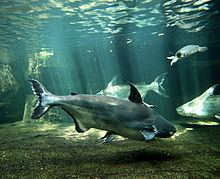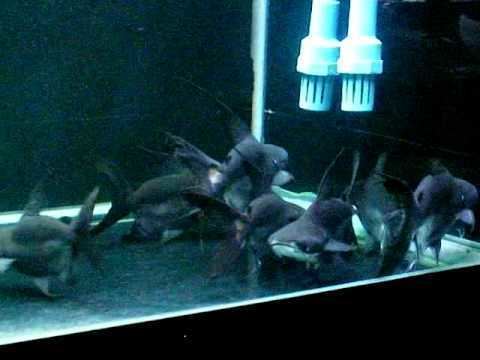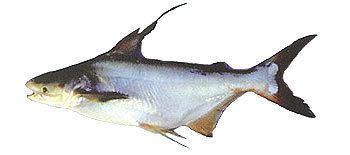Order Siluriformes Higher classification Pangasius | Phylum Chordata Family Pangasiidae Scientific name Pangasius sanitwongsei Rank Species | |
Similar Pangasius, Catfish, Shark catfish, Pangasius larnaudii, Mekong giant catfish | ||
Giant pangasius chao praya giant catfish wang pla aquarium bang sai
The giant pangasius, paroon shark, pangasid-catfish or Chao Phraya giant catfish (Pangasius sanitwongsei) is a species of freshwater fish in the shark catfish family (Pangasiidae) of order Siluriformes, found in the Chao Phraya and Mekong basins in Indochina. Its populations have declined drastically, mainly due to overfishing, and it is now considered Critically Endangered.
Contents
- Giant pangasius chao praya giant catfish wang pla aquarium bang sai
- Etymology
- Physical characteristics
- Behavior
- Relationship to humans
- References

Etymology
The specific name sanitwongsei was chosen to honor M. R. Suwaphan Sanitwong (Thai: ม.ร.ว.สุวพรรณ สนิทวงศ์) for his support of fisheries in Thailand.
Physical characteristics

The giant pangasius is pigmented with dusky melanophores. It has a wide, flat, whiskerless head. It has a silver, curved underside and a dark brown back. Its dorsal, pectoral and pelvic fins are dark gray and the first soft ray is extended into a filament. Full-grown adults can reach 300 centimetres (9.8 ft) SL in length and weigh up to 300 kg (660 lb).
Behavior

The giant pangasius is a benthopelagic and migratory species. Juveniles and adults feed on crustaceans and fishes. These fish typically spawn just prior to the monsoon season.
Relationship to humans

Fishing of this species used to be accompanied by religious ceremonies and rites. It is often mentioned in textbooks, news media, and popular press. This fish is a popular food fish and marketed fresh.

These fish sometimes appear in the aquarium fish hobby. Most specimens do not reach their full size without an extremely large aquarium or pond. There is even a "balloon" form of this fish where the fish has an unusually short and stocky body. ื
